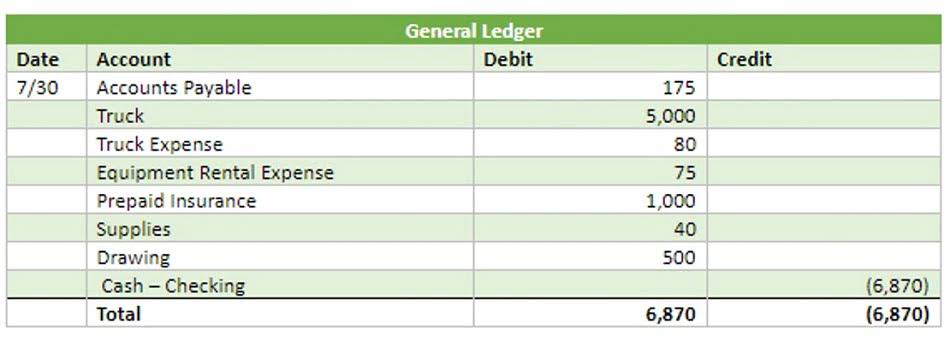

This blog post will unlock the power of Excel to make calculating your investment’s payback period straightforward and error-free. With our guidance, determining if or when an investment can become profitable becomes a less daunting how to calculate payback task. If you’ve ever found yourself in this situation, trying to figure out how quickly an investment will pay for itself, then understanding the payback period is crucial. You can use the Payback Period calculator below to quickly estimate the time needed to get a return on investment by entering the required numbers.
Advantages of the Payback Period
You don’t see future cash flows or how the value of money can change over time. Despite these issues, many people use this method because it’s straightforward and does a fast job at sizing up an investment’s risk. The payback period can be incorporated into capital budgeting decisions, particularly for smaller or less critical projects. It helps managers allocate resources effectively, ensuring that the company’s capital is invested in projects that will provide the quickest returns. Company C is planning to undertake a project requiring initial investment of $105 million. The project is expected to generate $25 million per year in net cash flows for 7 years.
Non-Discounted vs. Discounted Calculation
Keep in mind that the cash payback period principle does not work with all types of investments like stocks and bonds equally as well as it does with capital investments. The main reason for this is it doesn’t take into consideration the time value of money. In order to account for the time value of money, the discounted payback period must be used to discount the cash inflows of the project at the proper interest rate. In its simplest form, the formula to calculate the payback period involves dividing the cost of the initial investment by the annual cash flow.


Mastering Investment Decisions: A Comprehensive Guide to Calculating the Payback Period


The importance of the payback period in decision making is a crucial aspect of capital budgeting. It allows businesses to assess the time it takes to recover their initial investment in a project or investment opportunity. By considering the payback period, companies can evaluate the feasibility and profitability of potential ventures. Let’s consider a hypothetical project with an initial investment of $500,000 and expected annual cash inflows of $100,000. This indicates that the project is expected to recoup the initial investment in five years. One of the disadvantages of this type of analysis is that although it shows the length of time it takes for a return on investment, it doesn’t show the specific profitability.
Advantages and Disadvantages of Payback Period
Unlike the payback period, ROI provides a broader view of profitability, including cash flows beyond the payback point. When calculating https://www.bookstime.com/ the payback period, cash inflows are treated as equal regardless of when they occur. For instance, receiving $1,000 today is not the same as receiving $1,000 five years from now, as the former can be invested to earn returns. By failing to account for the TVM, the payback period may present a misleadingly optimistic view of an investment’s profitability.
- While Payback Period Analysis offers valuable insights, it does have certain limitations.
- In this article, we will explore its significance, break down the calculation process, and provide practical examples to illustrate its application in real-world financial analysis.
- When divided into the $1,500,000 original investment, this results in a payback period of 3.75 years.
- Companies often prefer investments with shorter payback periods because they want their money back fast.
- Interpreting the payback period requires considering industry norms and organizational goals.
- Individuals and corporations invest their money with the intention of getting it back and realizing a positive return.
Advantages and Disadvantages of the Payback Period
The payback period is a metric in the field of finance that helps in assessing the time requirement for recovering the initial investment made in a project. It has a wide usage in the investment field to evaluate the viability of putting money in an opportunity after assessing the payback time horizon. Financial analysts will perform financial modeling and IRR analysis to compare the attractiveness of different projects.
- This focus on rapid recovery can be particularly beneficial in industries characterized by fast-paced changes and uncertainties.
- Ultimately, the payback period serves as a vital tool for businesses looking to optimize their investment strategies.
- This means it will take five years for the cash inflows to equal the initial investment.
- Yes, the discounted payback period is more accurate as it considers the time value of money, providing a better understanding of an investment’s true return over time.
- Investments with longer payback periods may require a higher risk tolerance, while those with quicker returns might appeal to more conservative investors.
- By doing this, you can easily track how much of the initial investment has been recovered at the end of each period.
Payback Period analysis is a crucial aspect of capital budgeting that helps businesses evaluate the time it takes to recoup their initial investment. In this section, we will delve into the concept of Payback Period Analysis and explore its significance from various perspectives. However, it’s essential to complement it with other metrics (like net present value or internal rate of return) to make informed investment choices.
She’s a graduate from Jahangirnagar University, Bangladesh and has been working with Microsoft Excel since 2015. She loves writing articles on MS Excel tips & tricks, data analysis, business intelligence, capital market, etc. The above article notes that Tesla’s Powerwall bookkeeping is not economically viable for most people. As per the assumptions used in this article, Powerwall’s payback ranged from 17 years to 26 years. Considering Tesla’s warranty is only limited to 10 years, the payback period higher than 10 years is not idea. As you can see in the example below, a DCF model is used to graph the payback period (middle graph below).
How to Calculate Payback Period in Excel (With Easy Steps)


Additionally, the cumulative payback period can be used to assess investments where cash inflows vary significantly from year to year. This method involves tracking the cumulative cash flows until the initial investment is fully recovered. It provides a clearer picture of the investment’s performance over time, especially for projects with fluctuating returns. While the payback period offers valuable insights, it is important to consider its limitations. It does not account for the time value of money or cash flows that occur after the payback period is reached. Therefore, while it serves as a useful initial assessment tool, it should be complemented with other financial metrics for a comprehensive analysis of an investment’s potential.



